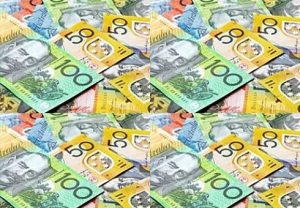Australian Dollar gains after RBA data
20 September 2016 by News DeskAustralian Dollar gained as markets looked for higher yielding assets like the ‘Aussie’.
 Australian Dollar was also boosted slightly by the latest minutes report from the Reserve Bank of Australia, according to currency specialists TorFX
Australian Dollar was also boosted slightly by the latest minutes report from the Reserve Bank of Australia, according to currency specialists TorFX
In the report detailing ex-Governor Glenn Stevens’ final policy meeting, the bank took a stable stance on interest rates and indicated that they would not be cut again in the foreseeable future.
As markets now believe the US interest rate will remain ultra-low for longer, investors began to return to the risk-correlated Australian Dollar due to the Reserve Bank of Australia’s comparatively healthy interest rate.
However, the current risk-on movement favouring the Australian Dollar could quickly evaporate if the Fed takes on a particularly hawkish stance this week, which is one of the reasons it’s considered risky!
New Zealand Dollar (NZD) – The Pound to New Zealand Dollar exchange rate slipped slightly on Monday, and by Tuesday morning had plunged over a cent and a half. This took the pair down to a new record-low and it could lose even more value in the coming days depending on various factors.
The New Zealand Dollar has a few busy days ahead of it, as Tuesday’s session will see the publication of the latest global trade auction figures. Wednesday will, of course, see the Fed make its US interest rate decision – a vital factor for a risky currency like the ‘Kiwi’.
Lastly, the Reserve Bank of New Zealand (RBNZ) will be making its own interest rate decision during Thursday’s Asian session. Markets expect the rate will be left frozen at 2.0%, which is one of the highest interest rates in the developed world.
Australian Dollar gains after RBA data
Pound Sterling (GBP) – The Pound attempted a limited recovery against some of its major rivals throughout Monday’s session, as investors bought the currency at its cheapest levels following Friday’s plummet. Monday’s Rightmove house price report was seemingly unable to inspire Sterling movement.
Amid a lack of key data, UK markets instead looked over the day’s Brexit news and speculation. Sterling’s appeal was weighed down slightly by comments from UK Chancellor Philip Hammond, who stated that the UK government may have to sacrifice single market access in order to improve immigration control.
By Tuesday morning, Sterling had given up most of its Monday advances and trended lower.
US Dollar (USD) – The Pound gained almost half a cent during Monday’s session and has been able to hold its ground above its weekend lows as of Tuesday morning. While Sterling trended weakly and lacked the drive to advance, the US Dollar was undermined yet again by low bets of a Federal Reserve interest rate hike this week.
Most of the world’s foreign exchange market will be fixated on the Federal Reserve when it holds its September policy meeting on Wednesday evening. Currently, the majority consensus believes that policymakers will leave rates frozen until December due to mixed economic news and the uncertainty surrounding the US Presidential election. For the US Dollar to advance this week, Fed policymakers need to take a hawkish stance and play up the potential of a 2016 rate hike.
If the Fed shocks the markets and actually does hike rates this week, the US Dollar could soar and possibly even knock GBP/USD down to new three-decade-lows. On the other hand, if the Fed takes a dovish stance the US Dollar could plunge.
Euro (EUR) – The Pound to Euro exchange rate had given up most of its Monday advances by Tuesday morning, and instead trended at its lowest level in almost a month.
Monday’s data did little to change Pound or Euro sentiment. Low-influence Eurozone ecostats included July’s current account and construction output reports. Construction saw a 1.8% increase in July, the largest monthly jump since January, bringing the yearly score up to 3.1%. However, most of the day’s Euro strength came from a US Dollar selloff, with the Euro being one of the ‘Greenback’s biggest trade rivals.
Canadian Dollar (CAD) – The Pound to Canadian Dollar exchange rate edged slightly higher in Monday’s session, briefly falling to a September low before recovering slightly from its worst levels. This was despite increases in oil price on hopes of a deal to stabilise oil output and stimulate demand.
The oil-correlated Canadian Dollar failed to capitalise on the news, likely due to the market sentiment that the increase in oil price was unlikely to last for long amid this week’s considerable focus on central banks such as the Fed, RBNZ and Bank of Japan. However, the Canadian Dollar could advance against the Pound on Wednesday if the Fed disappoints investors.
Disclaimer: This update is provided by TorFX, a leading foreign exchange broker, its content is authorised for reuse by affiliates.
Learn more about the Australian Dollar – Contact TorFX: Get A Quote
Want to live and work Down Under? Click here for expert help: Skilled Migration to Australia
Want to get a job Down Under? Click here for expert help: How to Get a Job in Australia
Click here for expert help with travel visas: Travel Visas to Australia
Click here for tourist information about Australia: Visit Australia


